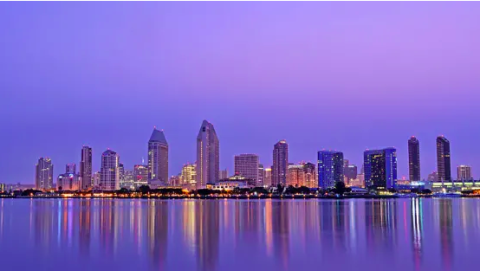A few months ago, I was watching a local news station when I saw a reporter outside of the Korean grocery store, H Mart in the Convoy District. As I always am, I was enthusiastic to see dozens of Asian people — customers of the market — in the backdrop as it’s a rarity to see Asian people on television even in a region as diverse as San Diego County.
However, I lost sight of the purpose of the news story when the reporter zeroed in on the only non-Asian customer — a white man — to interview. I imagined the reporter was sent out to cover a grocery store and in an effort to keep the story diverse, chose an Asian market. So why did the reporter choose to interview the only white customer at the store?
Was this happenstance? Overt racism? Systemic racism? Something else? I don’t know.
Fact is, there are different circumstances, perspectives, and stories that we can all tell. Some of them are good. Some bad. Most are a tangled mess of good and bad painted by our experiences.
What if the news reporter felt more comfortable interviewing the white man? What if his subconscious insecurities prevented him from getting a better story with an important perspective because he just assumed every customer is the same? I don’t know that either.
But this story and hundreds of others we see everyday are missing voices — even when they are right in front of us. More than 50 percent of the population in San Diego County identify themselves as non-white, according to the U.S. Census Bureau. Yet, we don’t hear enough life stories, troubles, successes, and lessons from so many neighbors and neighborhoods that call San Diego’s many unique and character-filled communities “home.”
From a political perspective, nearly half of San Diego’s voters self-identify as independent or non-partisan voters. Yet, from the national level on down, we hear story after story about whether one side is right or the other.
What if there are more than two sides to every story? What if there are nearly 1.5 million sides to the complex story of governing the eighth largest city in the U.S.?
With IVN San Diego, we are aiming to get in-depth with issues surrounding neighborhoods, homelessness and housing, elections, the new economy, social equity and police reform.
Our goal is not to tell you the answers. We don’t have them. Our mission is to provide more perspectives — from community leaders, with the help of local experts, and with your participation.
We want to challenge our readers by introducing stories that provide a different angle than our own. To publish news and commentary that goes a little deeper than today’s headlines. And we will introduce a podcast that gets good people from different backgrounds and political tendencies to discuss the rationale for our perspectives, rather than questioning the motives of our different conclusions.
IVN wants to be the catalyst for people whose voices might never be heard, for ideas and angles that are marginalized by the larger narrative — or even a megaphone for those who never thought they could have a voice — but need to be a part of the conversations we have about San Diego’s past, present, and future.
Are you that voice? Is there an issue that you want covered? Email me at hoa@ivn.us.
In an effort to keep the dialogue open and productive, IVN San Diego abides by the following etiquette:
No personal attacks
No partisan attacks
Substantiate sources
No self-promotion
